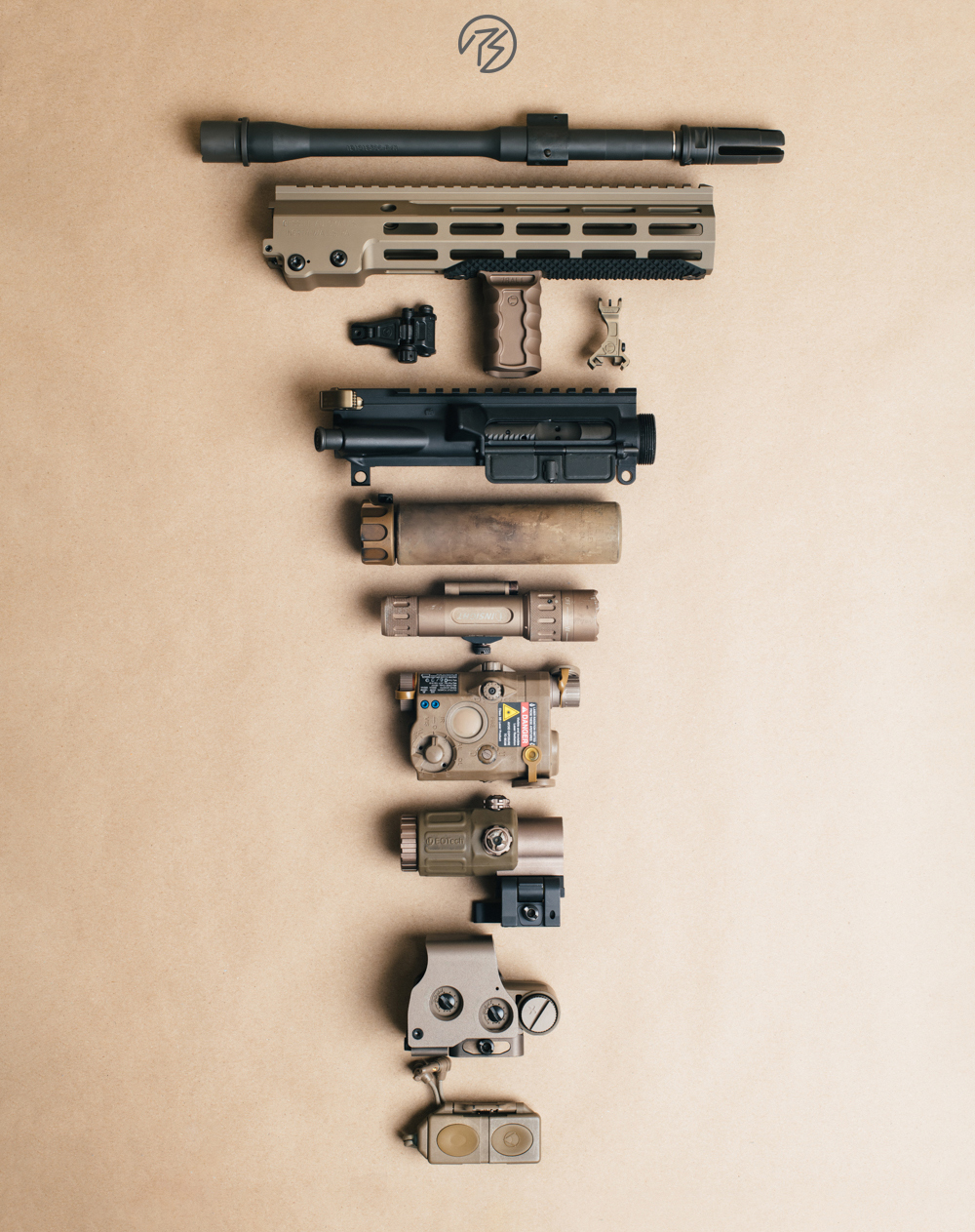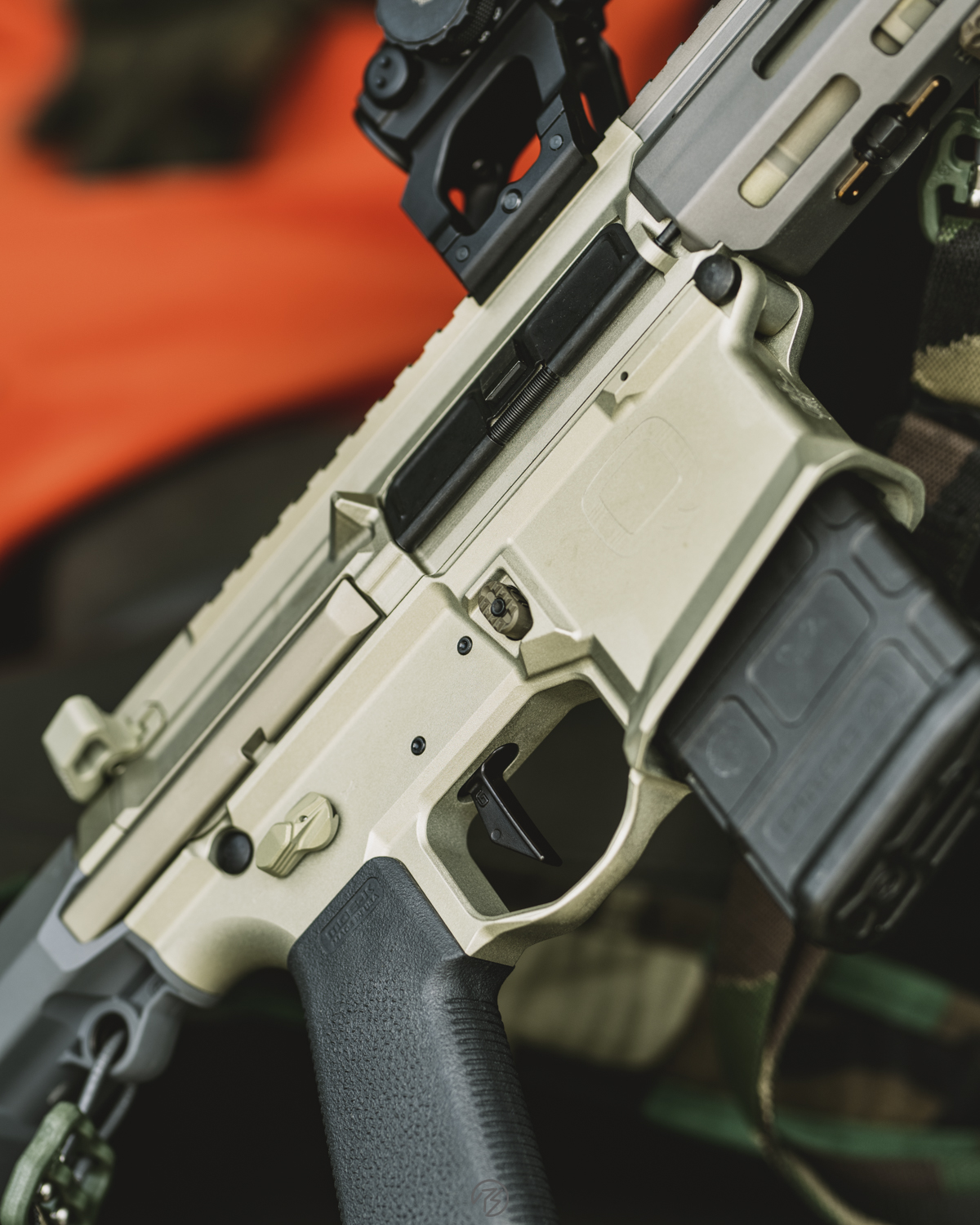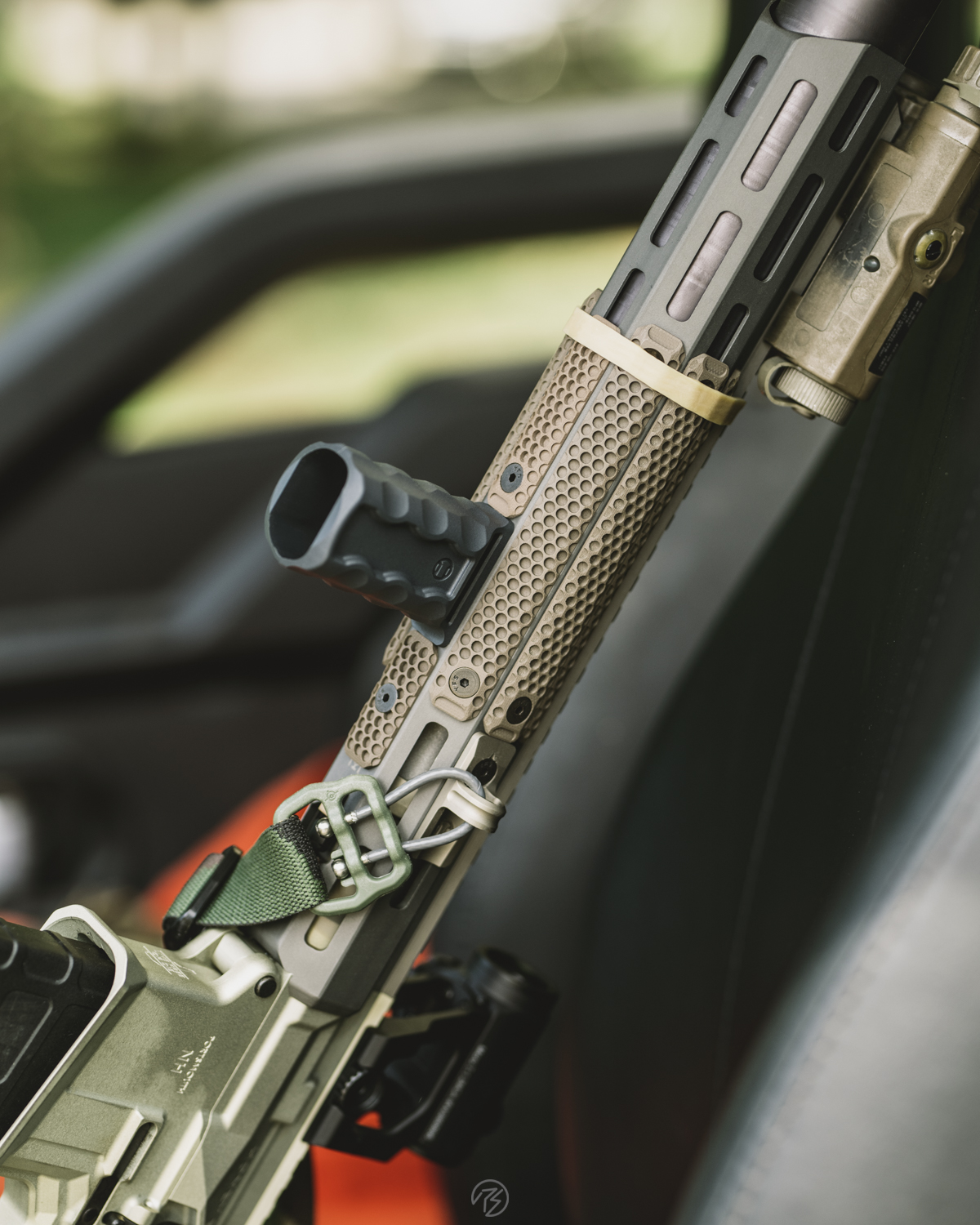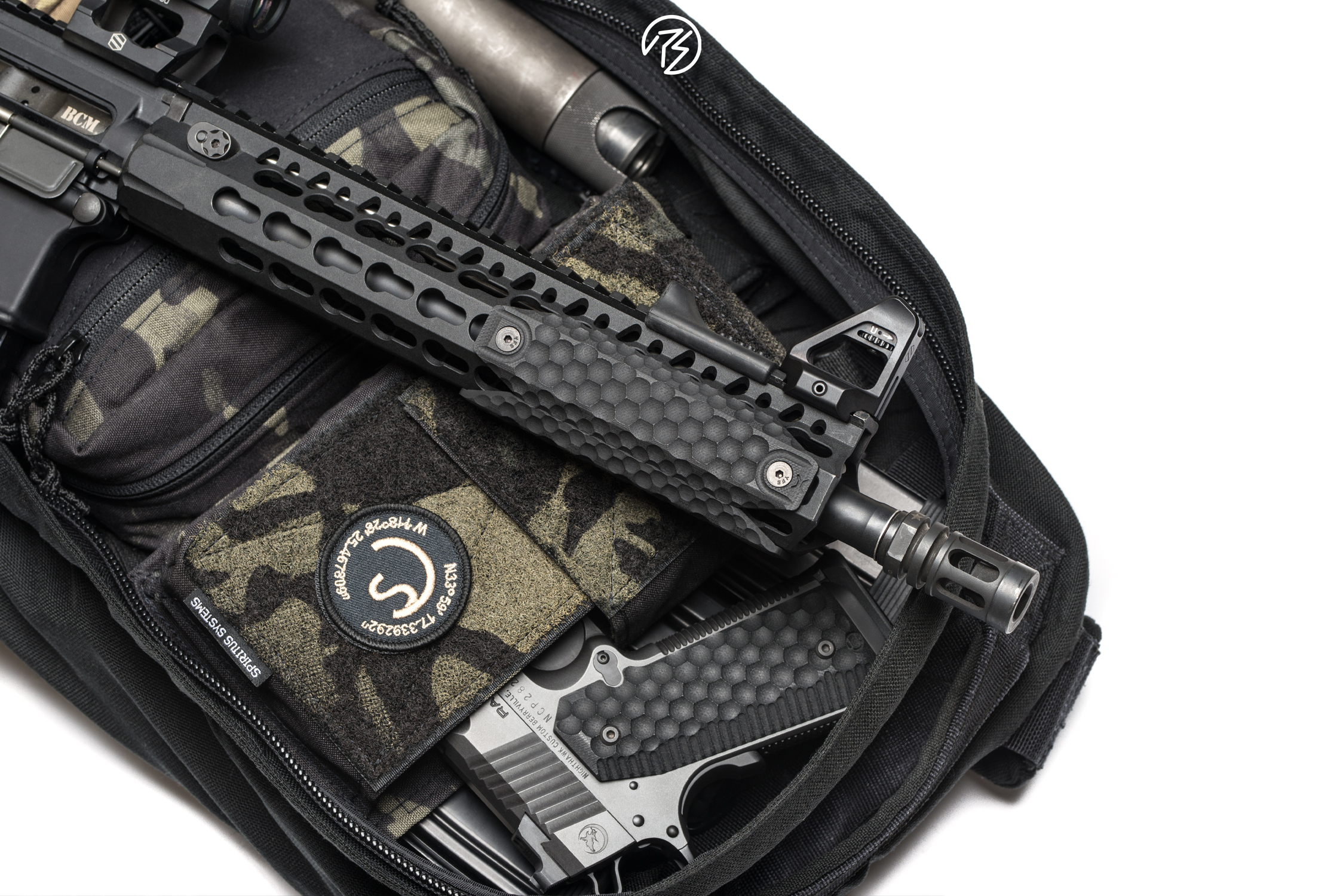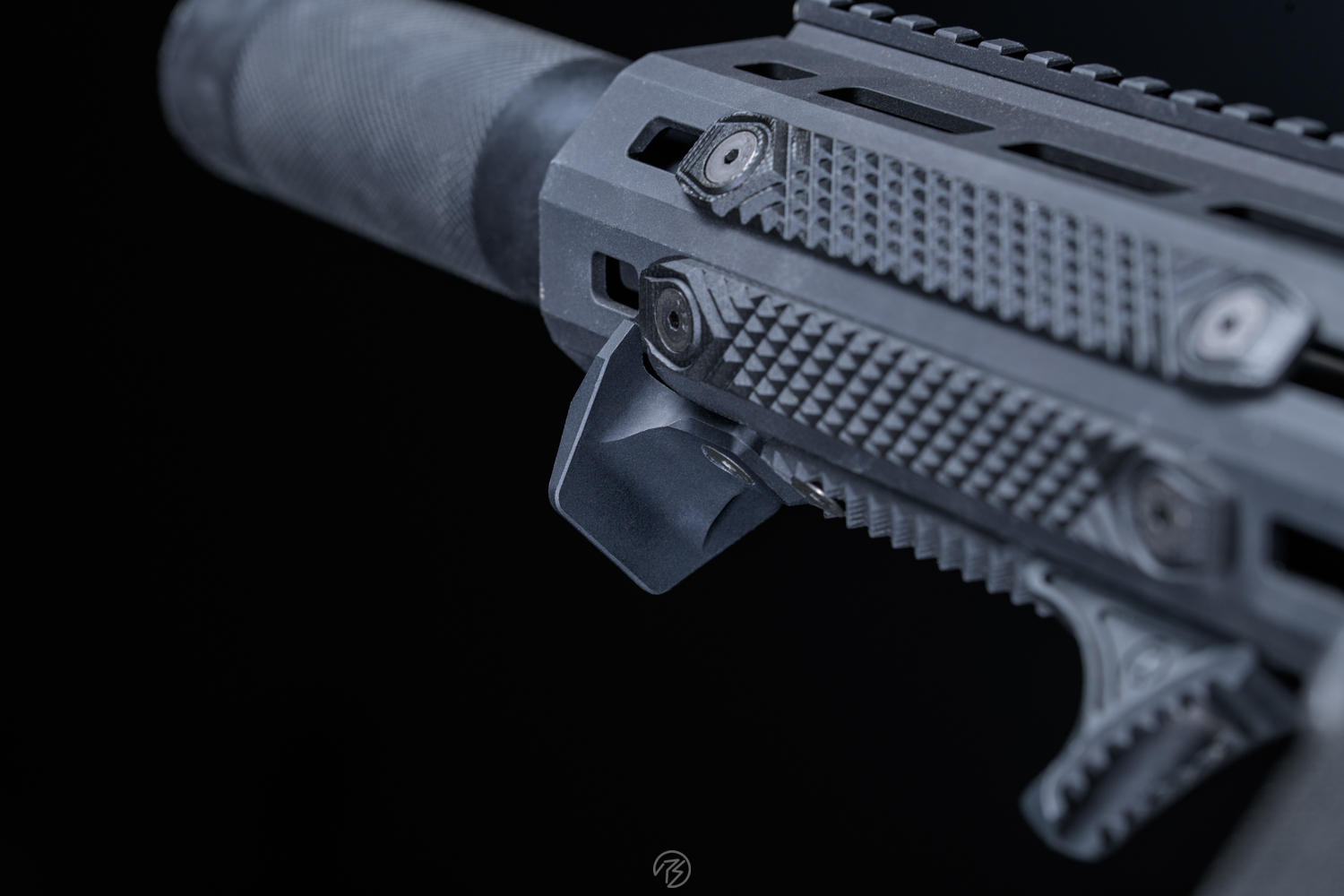If you’re looking to learn more or want to brush up on your knowledge, this article is all about the AR-15 basics. Whether you’re simply searching for information, or want a comprehensive rundown on how to buy the best AR for your needs, you will find the information you need here. This article will give you a great foundation for either making an AR rifle purchase or giving you the information you need to know if you are intending to upgrade one. With all that being said, let’s get started.
The AR-15 - The Basics
As one of the most popular sporting rifles on the market, the AR-15 is a versatile choice for many reasons. If you didn’t already know, the AR-15 is a semi-automatic rifle —while there are military versions that can be fully automatic or offer fire-selection capabilities, those available for civilian use are semi-automatic only.
Fully automatic rifles are rifles that fire multiple rounds with the pull of the trigger. Semi-automatic rifles, on the other hand, only fire one round per pull of the trigger. While you can purchase accessories that can improve the speed at which you can fire, semi-automatic rifles won’t ever be able to fully mimic their automatic counterparts.
AR Shooting Ability
As a lightweight rifle, the AR-15 has little recoil even when chambered with its native 5.56 x 45 mm round. Also, it’s a relatively comfortable rifle to shoot, being considered much more ergonomic than its counterpart, the AK-47.
What’s more, the AR-15’s shooting ability allows many types of shooters to enjoy its modularity and ease-of-use.
Modular
The AR-15 is uniquely modular, allowing for components, upgrades, and parts to be changed out within seconds. What’s more, the two primary segments of the AR-15, the upper and lower receivers, can be swapped out relatively quickly to fit the needs of the shooter. The upper receiver specifically can be quickly and easily switched out to serve a variety of uses.
For example, your AR-15’s upper receiver can be swapped from a close-quarters combat (CQB) carbine to a long-range precision rifle within seconds. It’s good to note that only the lower receiver is the serialized firearm, and it can be mated with a wide variety of upper receivers to fit your needs without any additional paperwork.
For the most part, the upper receiver can be swapped out to switch calibers. The lower receiver carries the trigger mechanism. If you haven’t already searched online, there are a ton of top-tier aftermarket products you can add to your AR-15, including those offered by RailScales!
Make It Yours
Finally, as you research buying your AR-15 and the upgrades and AR accessories to go with it, remember that it’s your money and your purchase. As long as what you’re purchasing is legal and safe, do what you want. Want to be impractical and buy all the whizzbangs you can and attach them? Go for it! Want practicality for the end of days? Do it! Realistically purchasing your rifle needs will come down to what makes you more comfortable with your rifle and what makes you happy. Quality products will always go the distance so remember to buy once, cry once.
A Brief History of the AR-15
In the 1950s, Eugene Stoner designed the AR-15 as an alternative to the AR-10 while working at ArmaLite. The goal was to give the light infantryman the capability to carry more rounds. Later in 1959, ArmaLite sold the AR-10 and AR-15 rights to the gun manufacturer Colt for a variety of reasons, one being to keep up with the market demand for the ARs.
What you may have not known is that the “AR” in AR-10 or AR-15 stands for ArmaLite, not assault rifle, one of the many myths that have sprung up in regards to the firearm.
Moving forward a few years, Colt made a few adjustments to the AR design and introduced the M16 as a military use rifle. It was an automatic (select-fire) rifle and most of the M16s had a 20-inch barrel. Later on in the 1990’s, the M4 was introduced, which had a 14.5-inch barrel and utilized a shorter carbine barrel and gas system. You will find that people are split between pronouncing carbine as “car-BYNE” or “car-BEAN,” but either pronunciation is accepted.
One final historical note is that Colt owns the rights to “AR15” and “AR-15,” which means that other manufacturers have designed their own versions that are slightly different. However, the general “pattern” is still relatively the same.
Buy or Build Your AR-15?
When it comes to purchasing an AR-15, you have the choice of either buying or building one. Buying an AR-15 is usually the most cost effective option, as you can find many different models within a variety of price ranges. On the other hand, building your own AR-15 gives you the opportunity to customize the firearm to fit your exact needs. You can choose the parts and accessories that work best for you, such as the type of barrel, stock, and sights. Additionally, when you build your own AR-15, you gain a greater understanding of the firearm and how it works. In the end, it really comes down to your individual preferences and budget.
Purchasing Your Rifle
If you’ve never owned a rifle before, and the AR-15 is going to be your first — or any rifle for that matter — buy a complete rifle from a reputable manufacturer. Not only will you be able to better acquaint yourself with the rifle as a complete product, but you can begin to explore various components as you upgrade them so that you do not become overwhelmed and give up building your rifle before it’s finished. Also, a reputable manufacturer will sell you a rifle that is ready (for the most part) to fire at the range or on the hunting lease “out of the box,” which means you won’t have to anguish over a delayed part holding up your ability to hit the range!
When you choose to build an AR-15, the integrity of the build is on your hands. Now, if you want to go with a hybrid build for the best of both worlds, you can do that, too; if you’re new to the AR-15 platform but still want to build your own rifle, this may be the best move for you. You can get lowers and uppers completed so that you can build the other components. This means that you can get a lower from a reputable manufacturer and build your own upper.
Remember, buying complete rifles eliminates dozens of potential headaches. First, a complete rifle will have a warranty you can lean on if anything is to go wrong with the product. What’s more, new rifle owners tend to not know what they want or like just yet. Building a rifle that you eventually do not like is not the ideal situation.
Ideally, you want to buy your first AR-15 and upgrade it to something you absolutely love, and then go build the same version on your own. For most, this is a successful way of building their own rifle.
Here are some other benefits to buying your own rifle:
- Factory guns will cost just about as much as building your own without the headaches.
- You’ll be able to sell a factory gun easier if you ever decide to move on.
- Your warranty will cover a majority of any issues or defects you may encounter.
Building Your Own
Let’s take a look at building your own rifle. There is something intrinsically satisfying to see a challenging project to its finish. For most, the success isn’t in completing the project, but it’s in the process. It’s best that you wait until your second or third rifle before you dive into an entire AR-15 build project. This way, you have some experience and comfortability with the rifle before you go ahead and build your own.
RailScales: The Best AR Accessories For Beginners
Learning the AR-15 basics, and both deciding whether to build or buy will still give the end user options for adding additional accessories to truly customize the rifle. RailScales offers a wide array of accessories that cater to different setups. With products manufactured in the US, the quality of RailScales products is apparent, with premium packaging, high-end materials and hardware, and quality assurance backed by a hardware warranty. RailScales makes modular customization easy, with parts that are designed to work in a variety of setups and configurations to cater to the individual shooter. The RSB and Anchor pair great with any rifle length, and with new offerings like the polymer RSBM-P as well as the QTR Wide Stop, RailScales will continue to innovate and drive product development to address the needs of the modern shooter. Shop online now!


